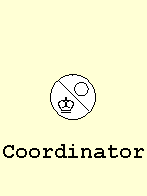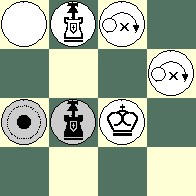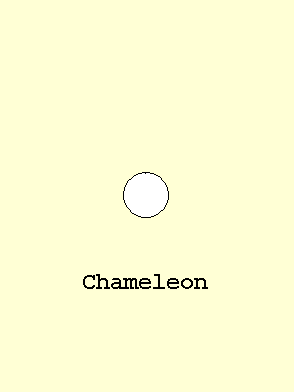An Illustrated Guide to Ultima Pieces
This page is an illustrated guide dedicated to explaining how Ultima pieces capture. Those unaccustomed to playing Ultima may have difficulties with the Orthodox chessmen. Below is an array featuring picto-graphic pieces which can be drawn or printed onto flat disks such as checkers or poker chips.

The diagrams use these special graphics to represent the Ultima pieces, although typically, ortho-chess pieces are used to reperesent them.
For more information on Ultima, see our Ultima web page, or use Zillions-of-Games to actually play a game.
Note that the King does not appear in the following table. That's because the King in Ultima moves and captures just like the King in orth-chess, except for castling -- there is no castling in Ultima.
None of the pieces in Ultima (except the King) capture by displacement. The one exception to this is the Chameleon which can threaten a King via a displacement capture.
Coordinator | Long Leaper | Withdrawer | Immobilizer | Pinching Pawn | Chameleon

The White Coordinator captures the Black Pinching Pawn at a4 |
The Coordinator moves like an ortho-chess Queen, but captures in a special way:
it captures by 'coordinating' with the King.
When a Coordinator moves, any enemy piece that is on the same
rank (or row) as the Coordinator, and the same file (or
column) as the King, is captured. And vice-versa, any enemy piece
that is on the same file as the King, and on the same rank as the
Coordinator, is also captured.
|

The Black Long Leaper captures both White Pinching Pawns by leaping over them |
The Long Leaper moves like an ortho-chess Queen, but captures in a special way:
it captures by leaping over an enemy piece.
The enemy piece must have a vacant square directly behind it
(behind relative to the location of the Long Leaper). The Long
Leaper jumps over the enemy piece and lands in any of the
vacant squares behind it. The Long Leaper cannot jump over
friendly pieces, but it may make multiple leaps in a single
direction.
|

The Black Withdrawer on b3 captures the White Pinching Pawn on b4 by moving away from it |
The Withdrawer moves like an ortho-chess Queen, but captures in a special way:
it captures by moving directly away from an enemy piece.
It must start its move adjacent to the enemy piece, and move one or
more squares in a straight line directly away from that piece.
The piece moved away from is then captured.
|

Black Immobilizer paralyzes the White Chameleon, Pinching Pawn, Long Leaper, and King |
The Immobilizer moves like an ortho-chess Queen, but is unable to capture.
Instead, the Immobilizer paralyzes any adjacent
enemy pieces, causing them to be immobile. The Immobilizer does
not paralyze friendly pieces, nor does it paralyze non-adjacent pieces that
move past or over it. Pieces that can never capture an Immobilizer are: Kings, Immobilizers,
Chameleons, and Withdrawers. Pieces become unparalyzed when the Immobilizer paralyzing them moves away or is captured.
|

The White Pinching Pawn on b1 captures the Black Withdrawer on b4 by pinching it between itself and the White King |
The Pinching Pawn moves like an ortho-chess Rook, but captures in a special way:
it captures by pinning an enemy piece between itself and another
friendly piece. So when a White Pinching Pawn moves to a square, if there is a
Black piece directly to the east of it, with a White piece directly
to the east of the Black piece, then then Black piece is captured. The same holds
true for pieces to the west, north, and south of the destination square.
|

|
The Chameleon moves like an ortho-chess Queen, but captures in a special way:
it captures an enemy piece using the enemy piece's
method of capturing. The diagram to the left is an illustration
of the Chameleon capturing seven pieces in one move.
|
Written by David Howe.
WWW page created: March 5, 2000.
